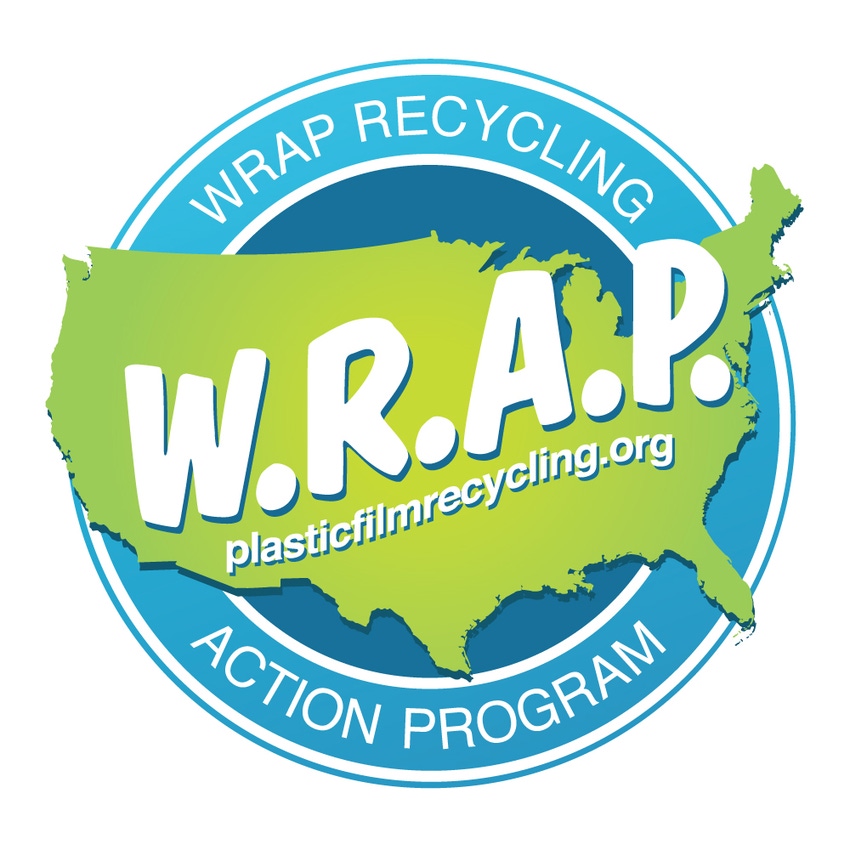Plastic film recycling making significant progress
The American Chemistry Council (Washington, D.C.) presents a look at the present and future of diverting flexible plastic packaging from landfills and shares advice for converters in an exclusive interview.

PlasticsToday reported a month ago on industry efforts in recycling plastics films, wraps and bags, specifically when the  Flexible Film Recycling Group (FFRG) of the American Chemistry Council (Washington, D.C.) joined partners in Omaha to launch a new campaign to increase the recycling of those materials both for recycling and, in some instances, converting the materials into fuel. You can read more about the program here.
Flexible Film Recycling Group (FFRG) of the American Chemistry Council (Washington, D.C.) joined partners in Omaha to launch a new campaign to increase the recycling of those materials both for recycling and, in some instances, converting the materials into fuel. You can read more about the program here.
We wanted to get a broader picture view of flexible film collection and recycling developments from an industry insider, and tapped the insights of the Steve Russell, vice president of plastics for the ACC, who provides an update into progress, current initiatives and a preview of what’s next in diverting flexible packaging from landfills.
Learn more about packaging and plastics at WestPack and PLASTEC West in Anaheim, CA, February 6-8, 2018. The venue includes free educational presentations, hands-on demos, networking opportunities, expert-led Innovation Tours and of course hundreds of exhibitors. For more information, visit the WestPack website. |
Where does the collection of flexible materials stand today versus five years ago?
Russell: There have been significant advances in recycling of flexible film. ACC’s Plastics Division is working to expand opportunities to recycle two common types of flexible packaging: polyethylene-based film packaging and multi-material film packaging, such as pouches. Our WRAP program is helping to  increase PE film recycling by raising consumer awareness that everyday used items can be recycled at more than 18,000 grocery and retail stores across the U.S. These include bags from produce, bread, and dry cleaning along with packaging from household paper products and beverage multipacks. Shipping pillows and bubble-style wraps, which we see a lot of this time of year, can also be recycled with film.
increase PE film recycling by raising consumer awareness that everyday used items can be recycled at more than 18,000 grocery and retail stores across the U.S. These include bags from produce, bread, and dry cleaning along with packaging from household paper products and beverage multipacks. Shipping pillows and bubble-style wraps, which we see a lot of this time of year, can also be recycled with film.
In addition, ACC’s research foundation is managing a project called Materials Recovery for the Future, which is conducting research aimed at recovering more film packaging, especially multi-material film, currently destined for landfill. So far, this initiative has shown that automated sorting technologies in use today can be optimized to capture flexible plastic packaging—potentially creating a new stream of recovered materials while improving the quality of other recycling streams (i.e., paper).
What’s the status for these programs?
Russell: The WRAP program launched in 2013 and is quickly gaining momentum. Today, WRAP programs are underway in Milwaukee, Wisconsin; Vancouver, Washington; Mecklenburg County and Onslow County, North Carolina; and the State of Connecticut. We look forward to announcing in early in 2018 new WRAP programs in the northwest region and a major southeastern city. The program also received a big boost nationally this year, when U.S. EPA became an official WRAP partner.
Next: Consumer education and challenges
How important is consumer education, particularly through the on-package How2Recycle label?
Russell: Consumer education is a major component of WRAP. We partner with state and local recycling agencies and grocery and retail stores to educate residents about how easy it is to bring their used PE film back to participating stores. In most cases, it’s as easy as grabbing a plastic shopping bag full of used film as you leave home to go grocery shopping. The How2Recycle label fulfills a critical role in the process because it reminds consumers to recycle via store-drop-off as they’re discarding an item. The consumer has the option to look at the item she’s holding in her hand for recycling information.
Can you  comment on the Hefty Energy Bag program?
comment on the Hefty Energy Bag program?
Russell: Not all plastics can be economically recycled today, but some innovative companies and cities are creating opportunities to use more of these valuable resources. The energy bag program is a terrific opportunity to collect these non-recycled plastics, which can help reduce contamination of existing recycling streams, and convert them into alternative energy that displaces the need for standard fuels such as oil, coal and petroleum coke. The City of Omaha should be commended for its leadership in implementing both energy bag and WRAP programs, and we hope to see this type of program spread throughout the country.
What’s the biggest challenge facing industry’s efforts to recycle flexible packaging?
Russell: Establishing mechanisms to collect used flexible packaging and growing end markets for recycled flexible packaging are current challenges. Most of the film and flexible packaging on the market today are made of PE, which—when kept clean and dry—can have high-value end markets. However, we’re looking to increase our nation’s ability to process and absorb all of the PE film we collect. Multi-material pouches present a different set of challenges. These items can contain multiple polymers and sometimes paper or metal. When aggregated for recycling, it’s difficult to identify the mixed materials and their characteristics in order to process them. Multi-material film might require additional processing steps, such as further separation, washing and densification.
Optimizing infrastructures to handle commercial and residential flexible packaging is critical, but work is still underway. Although WRAP has focused on residential sources, commercial film packaging makes up the greatest volume of material. ACC is working to better understand commercial film flows and logistics for recovery.
Next: Advice for converters and what's ahead
What can converters do to help? What can brands or retailers do?
Russell: Converters, brand owners, retailers—anyone with a stake in helping flexible film recycling succeed—can participate in our Flexible Film Recycling Group, which sponsors WRAP, or the Materials Recovery for the Future project, which is evaluating sorting solutions for all types of film packaging, including multi-material. Because it’s so light, flexible film packaging provides numerous well-documented environmental benefits such as helping to reduce greenhouse gas emissions, energy use and waste compared to alternatives. At the same time, we must develop workable, sustainable end-of-life solutions for these very efficient forms of packaging, or we risk losing these important benefits.
Future project, which is evaluating sorting solutions for all types of film packaging, including multi-material. Because it’s so light, flexible film packaging provides numerous well-documented environmental benefits such as helping to reduce greenhouse gas emissions, energy use and waste compared to alternatives. At the same time, we must develop workable, sustainable end-of-life solutions for these very efficient forms of packaging, or we risk losing these important benefits.
Another thing brand owners and retailers can do is to adopt the How2Recycle label on their film packages. The Sustainable Packaging Coalition created a “Store Drop-Off” label specifically for film. Companies such as Target, Kimberly-Clark, Ziploc, Clorox and Seventh Generation are already using the label, and we encourage more companies to follow suit.
What’s next, and how are things shaping up for 2018?
Russell: In the coming months, WRAP will work with U.S. EPA to support market growth for post-consumer recycled (PCR) film by recognizing companies that use PCR film in products and companies, such as retailers, that provide collection infrastructure. Additionally, the Materials Recovery for the Future project plans to announce the location of its flexible plastic packaging sortation pilot demonstration. The selected material recovery facility will be outfitted with the necessary optical sorters and configuration to effectively and efficiently sort certain types of flexible packaging at commercial scale. And we hope to see more communities implement energy bag-type collection programs to utilize valuable plastics that aren’t being recycled in commercial markets.
Anything else to point out?
Russell: We’re also excited that communities and even states are working to reduce contamination while recycling more types of plastics. One important facet is better education. ACC has worked with stakeholders throughout the plastics recycling value chain to create and streamline terms and images for educating consumers about plastics recycling. ACC’s Plastics Recycling Terms & Tools provides no-cost resources that enable community recycling coordinators to design clear and compelling educational resources for residents. Communities across the country are aligning their terminology and imagery to reduce confusion and increase valuable yields.
About the Author(s)
You May Also Like




